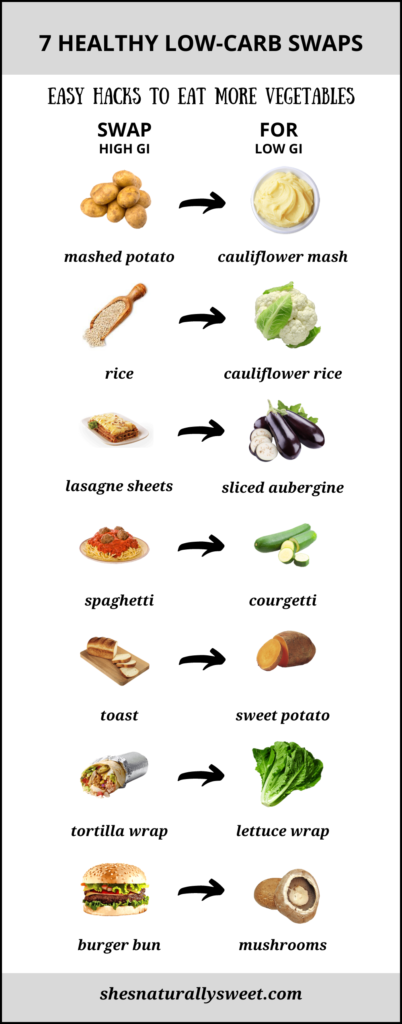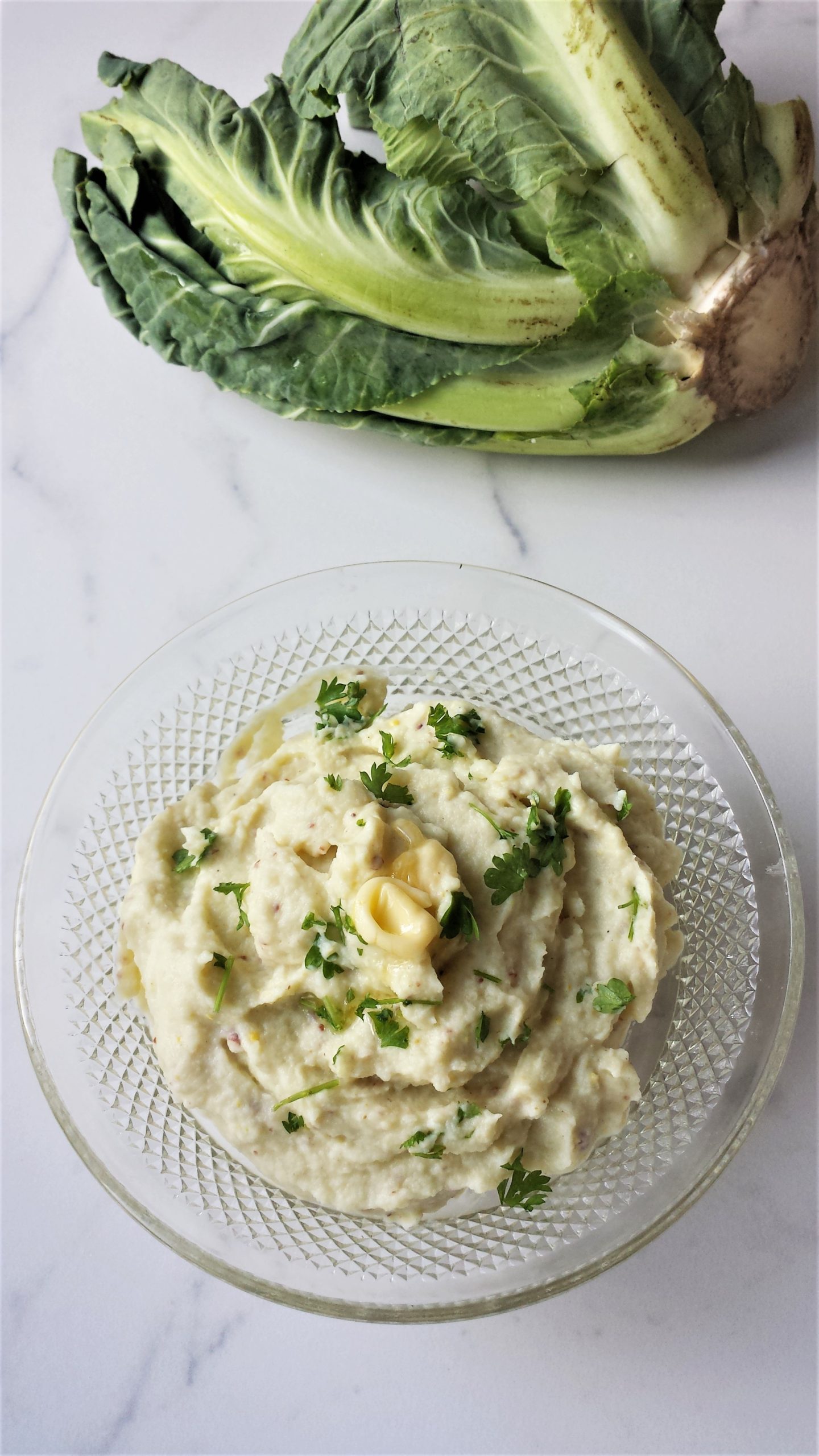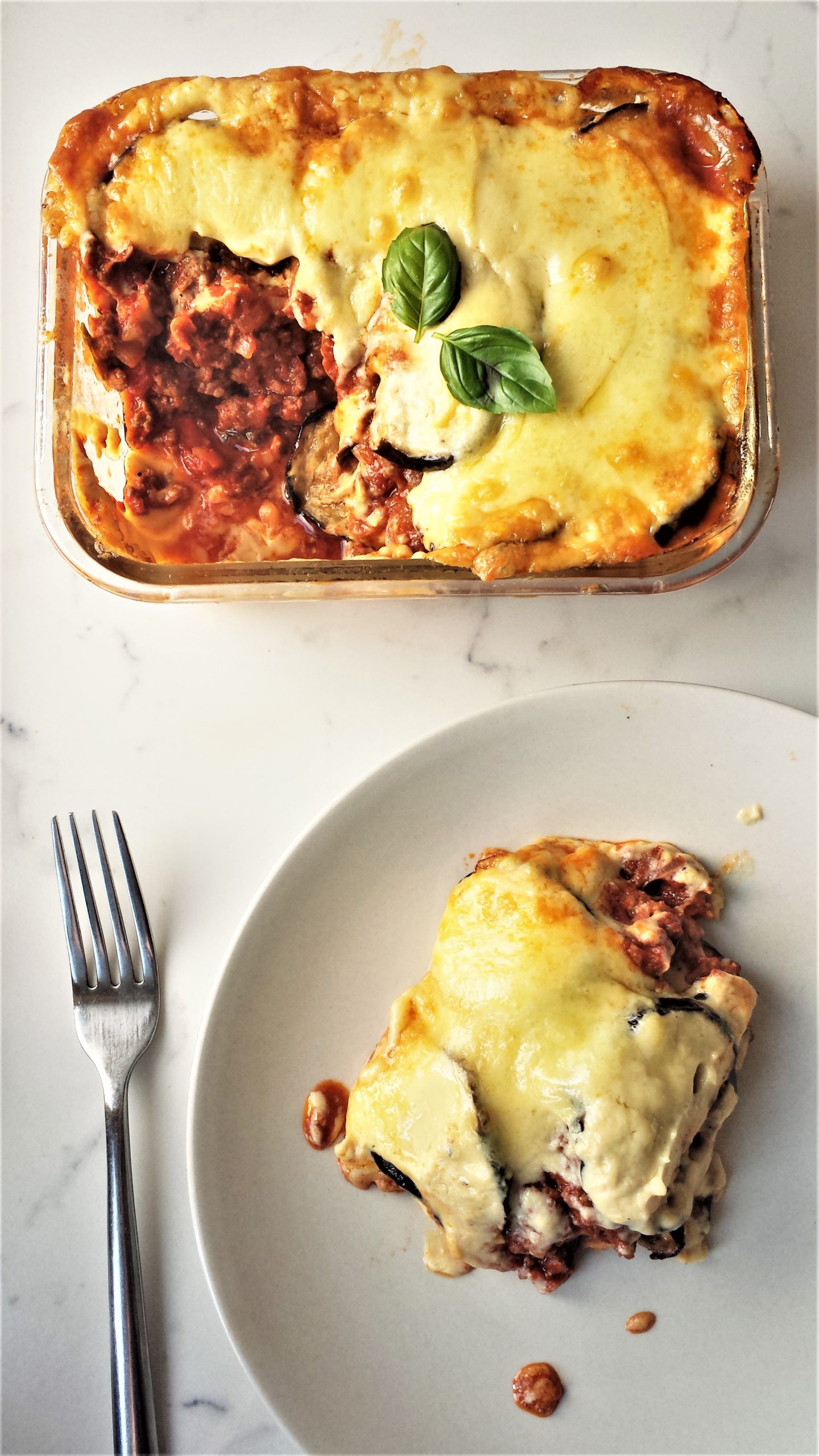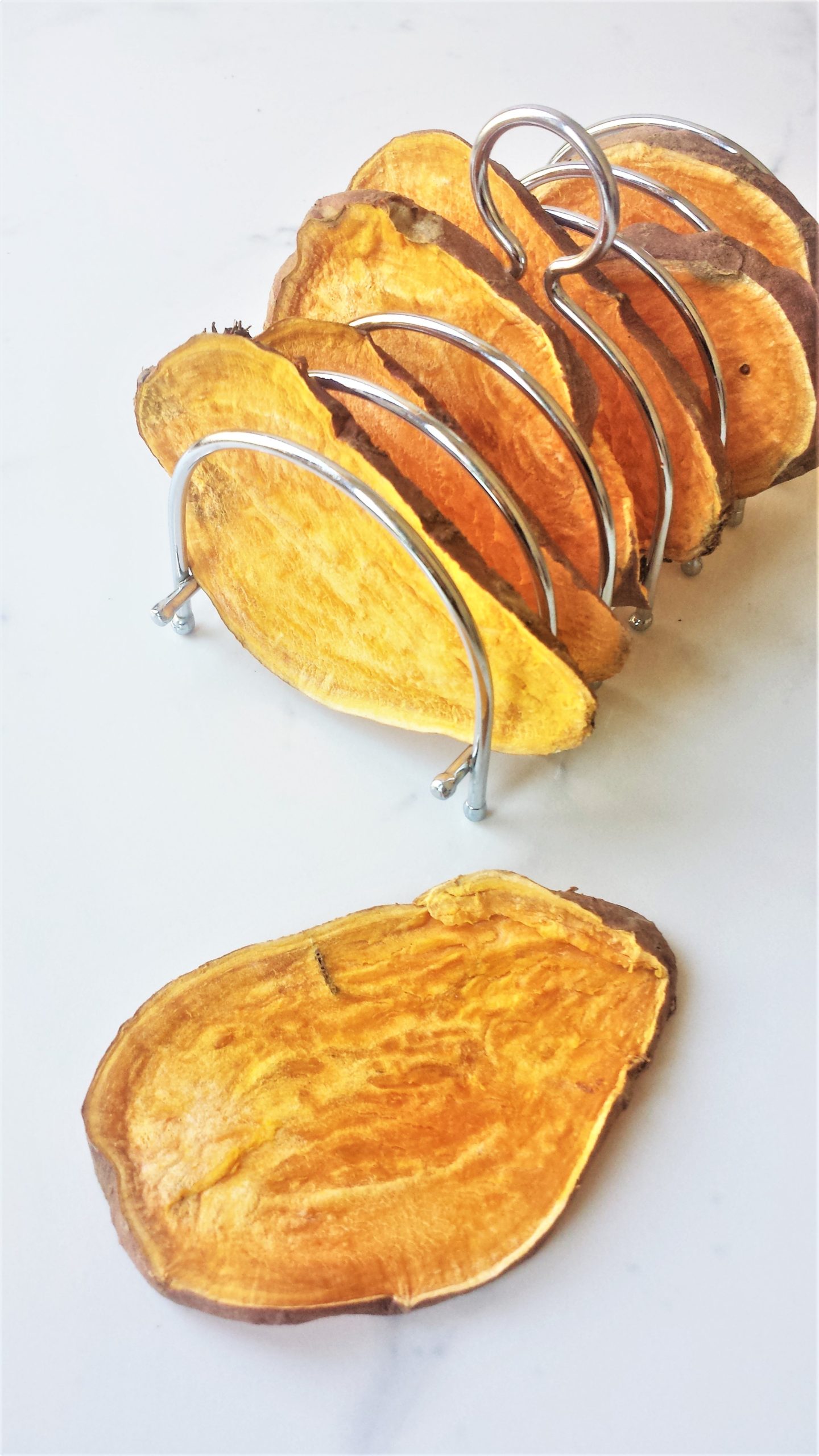EASY HACKS TO EAT MORE VEGETABLES
Most people can benefit by adding more vegetables to their plate and reducing their amount of sugar. These simple swaps are: easy to make, add variety plus vital nutrients and help you to achieve eating your “five-a-day” – although if you’ve seen the latest research you should aim for more like ten-a-day!
SWAP HIGH GI FOR LOW GI
Carbohydrates are an important part of any diet. Most vegetables are a great source of carbohydrates and contain essential vitamins, minerals and fibre. When people talk about “low-carb” what they are generally referring to is reducing very starchy carbohydrates that rate highly on the glycemic index/load which are often also less nutrient-dense. Some whole plant varieties can be beneficial in smaller quantities, however, it is the large amounts of heavily processed refined carbohydrates which can become a problem.
Obvious foods, which are high in carbs and low in nutrients, are sweet and sugary snacks such as conventional cakes, biscuits, pastries etc. What is often overlooked and can misleadingly seem part of a healthy diet is the savoury simple and even complex carbs. Whilst small amounts of these carbohydrates can be beneficial to health, it’s often the quantity and quality which is overlooked and can create imbalance.
LOW-CARB | GLUTEN-FREE | GRAIN-FREE
If you are pre-diabetic or type 2 diabetic reducing the amount of carbohydrates in the diet has been proven to reverse the disease. Often, the most common offenders are: potatoes, bread, pasta and rice, even whole-grain can prove a problem. So, by making simple substitutes that help to stabilise blood sugar, we can prevent or even reverse insulin resistance.
If you have coeliac disease, gluten-sensitivity, IBS or an irritable gut, these make brilliant wheat-free alternatives that are anti-inflammatory and gut-friendly.
If you follow a paleo diet, the diet which imitates what humans ate in the paleolithic or “cave-man” days, these also prove great alternatives to grains and industrial harvested crops. Often many conventional or alternative packaged goods are highly processed and contain long lines of unpronounceable ingredients, that’s why these make amazing one-ingredient swaps!
7 SIMPLE ONE-INGREDIENT SWAPS
If you are looking for simple hacks to eat healthier, these are some easy swaps to help you add more vegetables and variety to your diet. New research suggests that we should be aiming to eat 30 different plants per week for ultimate health.
1. Mashed Potato → Cauliflower Mash
Swap potato for cauliflower! Potato is not counted as one of your five-a-day, (or ten-a-day!) So swapping your conventional mash can count towards your daily vegetable intake. Plus cauliflower contains twice as much vitamin C and a whopping six times more vitamin K than potatoes.
2. Rice → Cauliflower Rice
Swap rice for cauliflower! White rice rates very high on the glycemic index: cauliflower is around 15 and rice can be anywhere up to 85. So this makes a great alternative if you are wanting a lower carb option which also cooks quicker than boiling rice. As well as being richer in vitamins, cauliflower contains over seven times more potassium than white rice.
3. Spaghetti → Spiralised Courgette
Swap spaghetti for courgette! Or, if you’re American, noodles for zucchini, to form what is commonly referred to as courgetti or zoodles! Using a spiraliser a spaghetti substitute is easy to make, you can even use a peeler to create long ribbons in exchange for pasta. Courgettes are rich in vitamin C and also contain nine times more potassium than pasta.
4. Lasagne Sheets → Sliced Aubergine
Swap lasagne sheets for aubergine! Sliced aubergine, or any other similar shaped vegetable, can easily be swapped for pasta sheets. Aubergine, or eggplant if you’re American, contains over twice as much fibre than pasta and is rich in vitamin K and potassium.
5. Toast → Sliced Sweet Potato
Swap bread for sweet potato! Sliced and roasted sweet potato is a convenient swap for toast. Particularly rich in vitamin A and B6. Sweet potatoes fall into the medium range in the glycemic index compared to higher-rated bread, another great gluten-free alternative.
6. Wraps → Lettuce
Swap wraps for leaves! A big lettuce leaf, like Chard, Cos or Romaine is an affordable lighter swap for wheat wraps. Not enough people eat enough greens, especially the raw leafy varieties, so this makes an excellent substitute to help up your intake.
7. Buns → Mushrooms
Swap buns for mushrooms! Portobello mushrooms are a similar size and shape to a burger bun so make a great veg-for-grain swap. Mushrooms, if exposed to sunlight, provide a natural source of vitamin D, they are also high in B vitamins such as B2 (riboflavin) and B3 (niacin).

For more information about basic nutrition click here.
Related Recipes




Leave a Reply